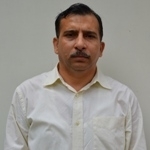|
The representatives of ten regional parties announced the formation of NERPF on 20 October 2013 in Guwahati and elected Neiphiu Rio, Chief Minister of Nagaland as the convener and Prafulla Mahanta, former Chief Minister of Assam as the chief strategist. Leaders from Asom Gana Parishad, Naga People’s Front, United Democratic Party and the Hill State People’s Democratic Party of Meghalaya, the Manipur People’s Party, Manipur State Congress Party, Manipur Democratic People’s Front, Mizo National Front, People’s Party of Arunachal and Indigenous People’s Front of Tripura joined hands to work together for… “safeguarding territorial, cultural, social, political and economic rights of the people of the region and to continuously strive to protect the distinctive identifies of the ethnic tribes and of all the people of the region. The organisation will be based in Guwahati and plans to organise meetings and rallies all over the region to reiterate their concerns. Adopting a 17point resolution, the front called for deportation of all illegal migrants from Northeast Region, reservation of 80 per cent jobs for locals in government and private sector, implementation of the look east policy, rebuilding a portion of the historic Stillwell road, a rethink on AFSPA and similar issues reflecting the local sentiments.
The NERPF seems to be another attempt close to the general elections to renew focus on the political landscape of the Northeast. With the state assembly elections due in Mizoram in November 2013 and the coming national Lok Sabha elections, the regional political front aims to seek attention of the mainstream national parties towards their cause. The chart below illustrates the present assembly seats held by the constituent parties of NERPF.
|
Political Party
|
Seats in State Assembly
|
Seats held by party
|
State
|
Next Assembly Elections Due
|
|
AGP
|
126
|
10
|
Assam
|
2016
|
|
MNF
|
40
|
03
|
Mizoram
|
2013
|
|
Hill State People Democratic Party
|
60
|
04
|
Meghalaya
|
2018
|
|
United Democratic Party
|
60
|
08
|
Meghalaya
|
2018
|
|
People’s Party of Arunachal
|
60
|
00
|
Arunachal
|
2014
|
|
Indigenous People’s Front
|
60
|
01
|
Tripura
|
2018
|
|
Naga People’s Front
|
60
|
37
|
Nagaland
|
2018
|
|
Manipur People’s Party
|
60
|
05
|
Manipur
|
2017
|
|
Manipur Democratic People’s Front
|
60
|
00
|
Manipur
|
2017
|
|
Manipur State Congress Party
|
60
|
04
|
Manipur
|
2017
|
The constituent parties of the NERPF have a limited standing in their own respective state assemblies except Naga People’s Front, which is the ruling party. Also, with state assembly elections due only in 2016 and later, except Mizoram which goes to poll in November 2013, the NERPF is unlikely to make any significant regional impact in the immediate future except for focusing on the coming Lok Sabha elections.
The Northeast states have a low presence in the Lok Sabha, having just 24 seats out of the total 543 seats. Of these, Assam has 14 seats. It also has 52 times the area of Delhi, the smallest state in India but only double the Lok Sabha seats at 14 compared to seven seats of Delhi state. This mismatch is due to the constitutional provisions, as the population of the state is the criteria for allocation of the seats in Lok Sabha. Though there are eight states in the North East out of total 28 states in India, they occupy only 3.8 per cent of land mass and, a mere four percent of population of the country. Hence, given the low population of North Eastern states, they do not have adequate number of seats in the Lok Sabha to create the desired political impact among the national parties. The chart below shows the present distribution of the Lok Sabha seats in Northeast India.
|
State
|
Total Seats
|
Held By
|
|
Assam
|
14
|
INC-07, BJP-04, AGP-01, AIUDF-01, BPF-01
|
|
Arunachal Pradesh
|
02
|
INC-02
|
|
Manipur
|
02
|
INC-02
|
|
Mizoram
|
01
|
INC-01
|
|
Meghalaya
|
02
|
INC-01, NCP-01
|
|
Nagaland
|
01
|
Vacant
|
|
Tripura
|
02
|
CPI (M)-02
|
|
Total
|
24
|
INC-13, NERPF-01
|
The Congress Party has won 13 out of the 24 Lok Sabha seats in the last Lok Sabha elections whereas the member parties of NERPF have presently only one seat. Though the coming together of the divergent regional parties to assert politically for a cause is appreciable, their miniscule presence in their respective state assemblies speaks of a lower voter confidence in their abilities. With a similar trend, the NERPF is unlikely to make any significant gains in the coming Lok Sabha elections. Due to the low numbers of seats in Lok Sabha, it is unlikely to be courted by UPA or the NDA or any other alliance at the time of formation of the government after the next Lok Sabha elections. The resolutions passed in the first meeting are long pending issues having an emotional impact on the local population and the front does not offer any significant solutions or alternatives to the voters. The formation of NERPF thus seems another ploy to garner interest of voters and seek media attention in the run up to the Lok Sabha elections.
*The author is a Senior Fellow at CLAWS.
|



